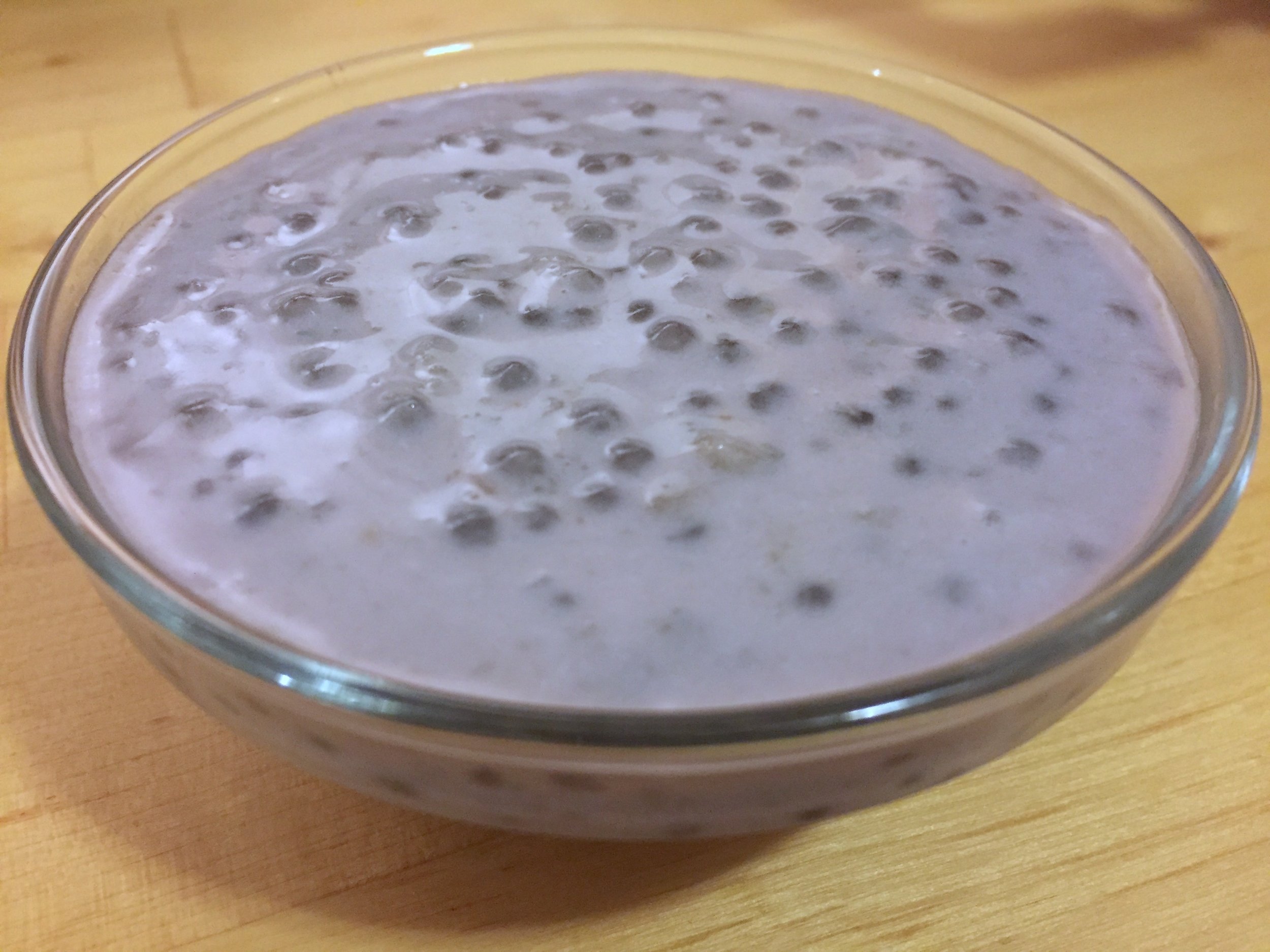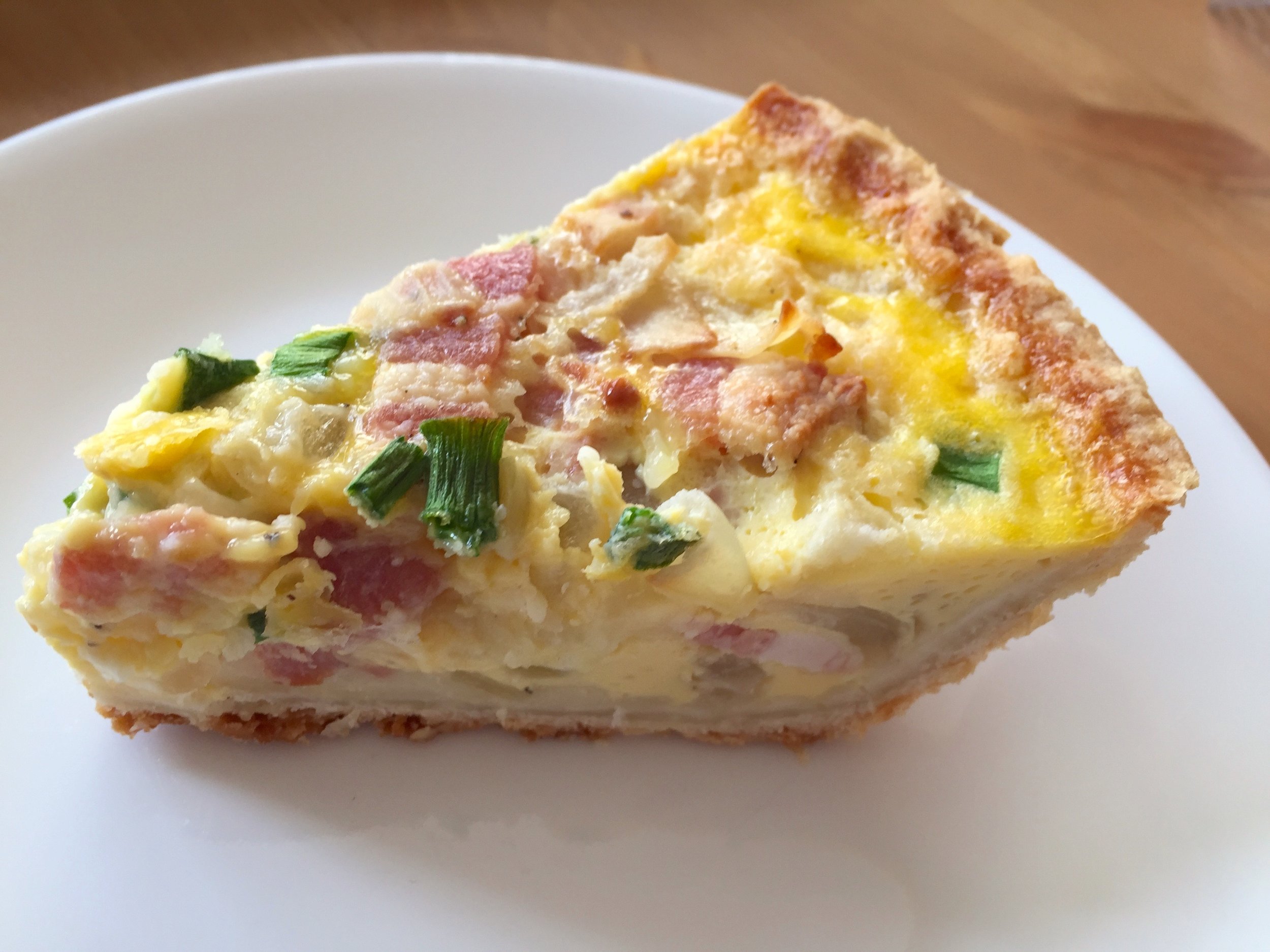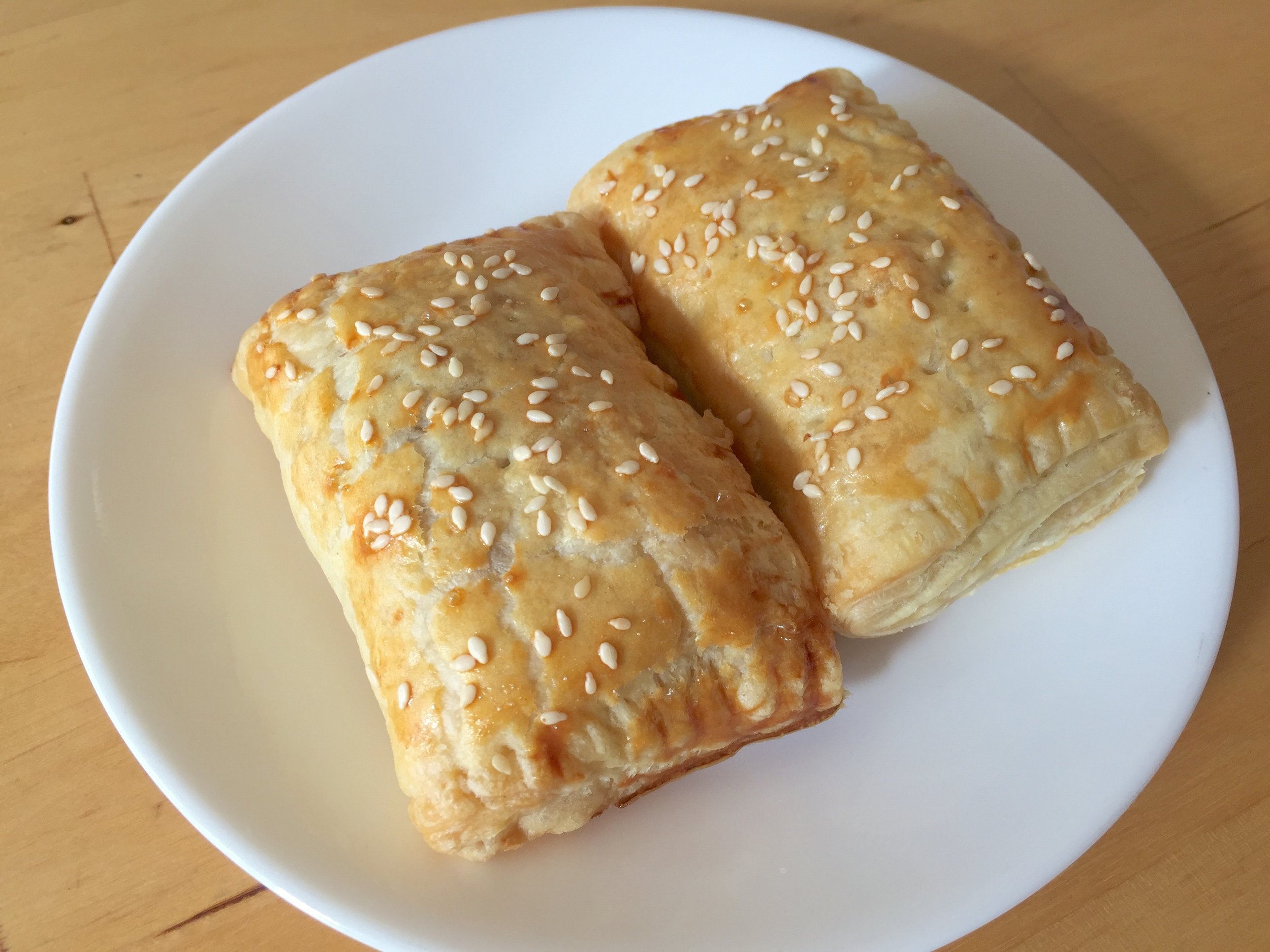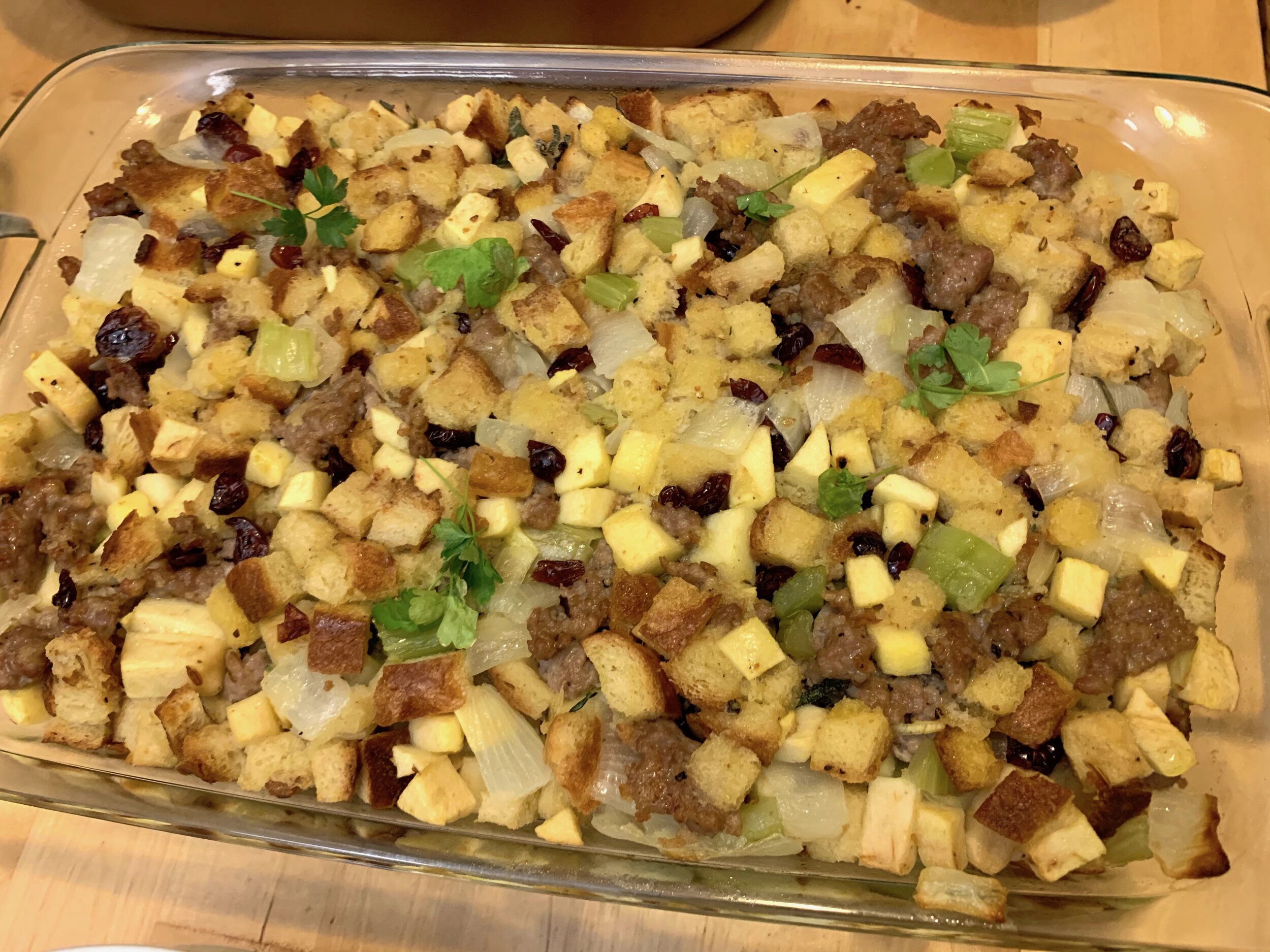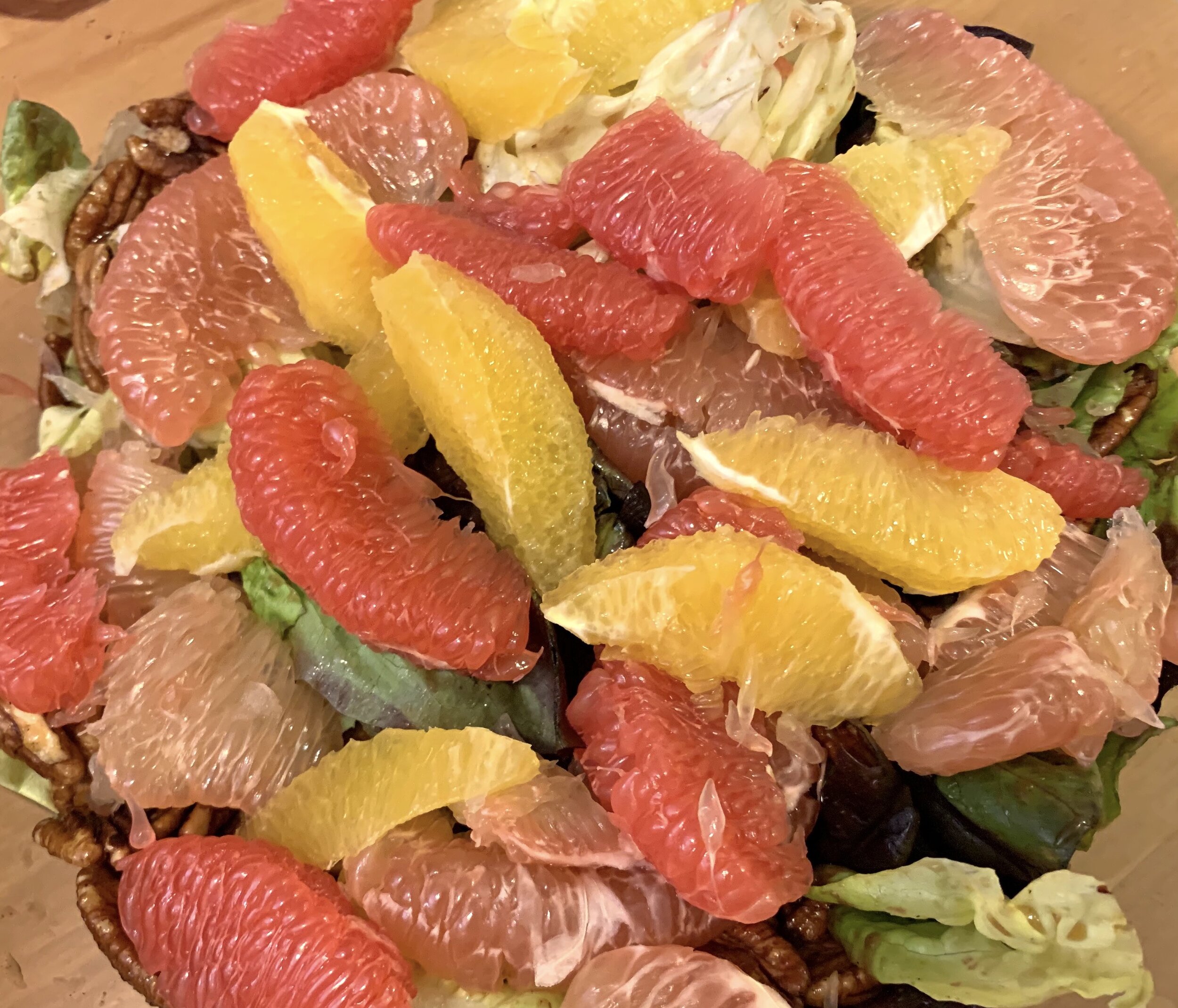Hong Kong Mango Pudding

芒果布甸 (Mang Guo Bu Dian)
Ripe mangos are deliciously sweet and fragrant, and mango season rolls around, one of my favorite desserts to make is mango pudding. Mangos are native to South Asia [1], and are a staple of South and Southeast Asian cuisines. Aside from being eaten raw, they are also used in a wide variety of sweet and savory dishes, including chutneys, salads, stir fries, and rice dishes. But how did mangos end up in a gelatin-based semi-set pudding, a preparation most commonly associated with 17th and 18th century Britain? The answer, as is so often the case in our history, lies in European imperialism.
When the ban on foreign trade was lifted in China in 1684, European demand for goods like silk, tea, and porcelain was high. However, no foreign goods were demanded in China to the same extend, leading to a large trade imbalance between China and Europe, and a net flow of silver from the European empires into Chinese coffers. In an attempt to equalize this imbalance, Britain began to smuggle opium in China, a drug trade which rebalanced the economic scales in Britain’s favor. In 1839, the Emperor launched a massive crackdown on foreign opium imports, seizing and destroying over 1000 tons of opium. To protect the economic interests of the Empire, Britain declared war.
The British frigate Nemesis (right), iron-hulled, steam powered, and armed with heavy guns, engaged junks of the Qing Imperial Navy at the Second Battle of Chuenpi.
The Qing Chinese forces, while numerous, were woefully unprepared to face both the technologically superior Royal Navy at sea and the British veterans of the Indian campaigns on land. In a rapid, 2-year campaign, the British forced the Chinese to the negotiating table. One of the trade concessions they extracted was the secession of an uninhabited island just off the coast of Southern China—an island which became Hong Kong.
The legacy of the British in Hong Kong is deeply mixed. They brought racism, drugs, and disease with them, but they also, perhaps inadvertently, brought economic prosperity, stability, and democracy. The city was founded by the British purely to extract wealth from China, but in the century and a half which followed, Hong Kong became a haven for many Chinese, fleeing the horrors of rebellion, civil war, and communism. Hong Kong grew into a financial and economic powerhouse in the Cold War era, one of the “Four Asian Tigers.” [2]
It is telling that when Britain finally agreed to relinquish its control of Hong Kong to mainland China at the end of the 20th century, what was in principle a long-overdue “undo” on a blatant violation of Chinese sovereignty, the predominant mood among the locals was not one of righteous triumph, but rather of fear and apprehension. Even after the handover of Hong Kong to the People’s Republic in 1997, the city still maintains a distinct political and cultural identity, despite the best efforts of the communist government to crack down on free speech and the city’s autonomy.
Hong Kong’s food scene reflects its complicated, multicultural past. Like tapioca pudding, mango pudding is a dish which embodies the city’s identities: an outpost of empire and crossroads of trade. It is a Victorian British dessert [3], adapted to local ingredients, which has now forged an identity of its own.
Ingredients
2 mangos (12 oz)
2 tbsp honey
½ cup heavy cream
2 tsp gelatin
To make mango pudding, we first have to source some mangos. Any variety works here, but do your best to find ripe mangos for this dish. They can be either fresh or frozen, as long as they are ripe and fragrant! Underripe mangos are not only less flavorful, they are also more fibrous and difficult to blend smooth, resulting in an unpleasant texture. If your mangos aren’t quite ripe, you can help them out a bit in the flavor department with some additional honey for sweetness, and some lemon juice for acidity. We are looking for about 12 oz of mango total—how many mangos this is will depend on the variety you’re using.
We will be using gelatin to set the pudding, and as the pudding will not be heated for extended periods, we will have to bloom the gelatin before using it. Mix 2 teaspoons of gelatin in ¼ cup of cold water and let it sit for 10 minutes. The blooming step hydrates the collagen protein lattice, allowing the gelatin to dissolve more easily later, and preventing the formation of lumps.
While the gelatin blooms, cut the mango into chunks. Reserve about a quarter of the mango pieces to top the puddings. Then, with a blender or immersion blender, blend the remaining mango pieces until they form a smooth puree. If your blender is having trouble getting started, add a bit of water to the mix to help it along.
In a pot, combine the mango puree with the honey, and mix well. You can use sugar instead of honey in this recipe, but I strongly prefer to use honey here, as it helps to accentuate the natural fragrance of the mango. Place the pot over medium heat and bring to a boil, stirring constantly, until the mixture just boils. When it does, remove it from the heat and stir in the heavy cream. This heating step is technically optional, as nothing in this mixture requires cooking—it is really more of a pasteurization step than anything else. However, as we are going to be letting the mixture is going to experience a wide range of temperatures as it sets, even in the refrigerator, I feel more comfortable having boiled the mango mixture once. As an added bonus, the gelatin will integrate more easily into a warm mixture than a cool one, giving us a smoother final texture.
When the gelatin is fully bloomed, melt it by adding ½ a cup of hot water, and stirring well. When the gelatin is smooth, pour it into the mango mixture, and stir well. Once the gelatin is stirred in, dole the mixture out into molds of your choice. Any glass, ceramic, or metal bowls or cups will work for this. Place in the refrigerator to chill for at least 3 hours, until the pudding sets. We are looking for a relatively delicate set texture, which is solid but light and will jiggle.
Top the puddings with the mango chunks and serve cold. I usually serve the puddings in the containers in which they set, but you can choose to turn them out onto a plate instead. If you’d like to do this, however, I recommend letting the puddings set for at least 8 hours. Other potential toppings include berries, kiwi, and whipped cream.
Substitutions
You can substitute coconut milk or condensed milk for the heavy cream. If you prefer a looser texture to the pudding, increase the amount of cream to a full cup, or decrease the amount of gelatin to 1 tsp. To make this dessert vegetarian, substitute agar-agar for the gelatin.
If you want to imbed chunks of mango or other fruits in the pudding, add these chunks to the molds before pouring over the pudding mixture.
[1] Mangos are relatives of cashews, and mango varieties can either be monoembryonic (one embryo per seed) or polyembryonic (multiple embryos per seed, up to 20). In the latter case, only one of the embryos is fertilized; the other embryos are clones of the parent plant. When planted, several shoots may emerge, but only the strongest plant will survive to claim the resources of the seed.
[2] The Four Asian Tigers—Hong Kong, Singapore, Taiwan, and South Korea—were economies which experienced rapid growth from the 1960s through to the 1990s.
[3] It is interesting to note that while gelatin-set desserts have fallen out of favor in Britain in the last century, they remain very popular in East Asia.
Recipe
Prep Time: 10 min Cook Time: 5 min Total Time: 3 hrs 15 min
(+ 3 hrs inactive)
Difficulty: 2/5
Heat Sources: 1 burner
Equipment: blender, pot
Servings: 6
Ingredients
2 mangos (12 oz)
2 tbsp honey
½ cup heavy cream
2 tsp gelatin
Instructions
1. In a small bowl, bloom the gelatin by mixing it with ¼ cup cold water. Let sit for 10 minutes.
2. Meanwhile, cut the mango into chunks, reserving 3 oz to top the puddings. Blend the other 9 oz of mango until smooth.
3. Combine the mango puree with the honey, and cook over medium heat, stirring constantly, until the mixture just boils. When it boils, remove from the heat and stir in the cream.
4. Melt the bloomed gelatin with ½ cup hot water. Add the dissolved gelatin to the mango mixture and stir well.
5. Pour into molds and refrigerate for at least 3 hours, until the pudding is set and chilled.
6. Top with reserved mango chunks and serve.











